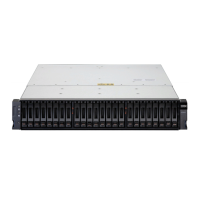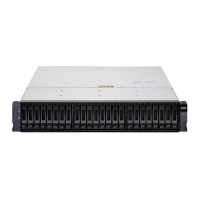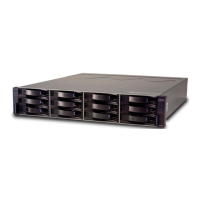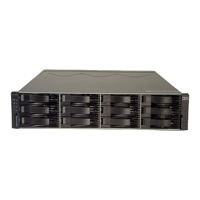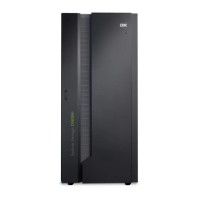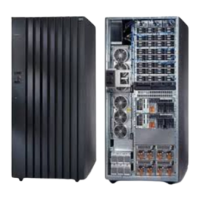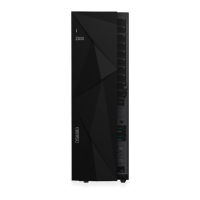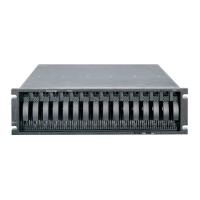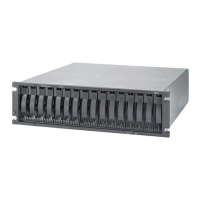Note: Until the power switch on each controller is turned off, power remains
turned on for both controllers.
8. Turn off both power switches on the rear of each storage enclosure in the
configuration.
9. If there are enclosures with dc power supplies in your configuration, turn off
the -48V disconnect devices after turning off the power-supply switches.
10. After you perform the necessary maintenance procedures, turn on the power,
using the procedure in “Turning on the storage subsystem” on page 82.
Performing an emergency shutdown
Attention: Emergency situations might include fire, flood, extreme weather
conditions, or other hazardous circumstances. If a power outage or emergency
situation occurs, always turn off all power switches on all computing equipment.
This helps to safeguard your equipment from potential damage due to electrical
surges when power is restored. If the storage subsystem loses power unexpectedly,
it might be due to a hardware failure in the power system or in the midplane.
To shut down the system during an emergency, complete the following steps:
1. If you have time, stop all I/O activity to the storage subsystem by shutting
down the host or disconnecting the storage subsystem logical drives through
the host.
2. Check the LEDs. Make note of any amber LEDs that are lit so that you can
correct the problem when you turn on the power again.
3. Turn off all power-supply switches, starting with the storage subsystem first
and followed by the storage enclosures. Then, disconnect the power cables from
the storage subsystem.
4. If there are enclosures with dc power supplies in your storage subsystem, turn
off the -48V disconnect devices after turning off the power-supply switches.
Restoring power after an unexpected shutdown
To restore power to the storage subsystem in a configuration after an unplanned
shutdown, complete the following steps.
DANGER
Never turn on any equipment when there is evidence of fire, water, or
structural damage.
1. After the emergency situation is over or power is restored, visually check the
storage subsystem for damage. Is there evidence of damage to any of the
storage subsystem components, cables, or equipment that is attached to the
storage subsystem?
v Yes: Do not continue with this procedure. Contact your IBM
technical-support representative for assistance. Depending on the current
service agreements, you might have to return the equipment to the factory or
local service center for repair.
v No: Go to step 2 on page 99.
98 IBM System Storage DS3500 and EXP3500 Storage Subsystem: Installation, User's, and Maintenance Guide
